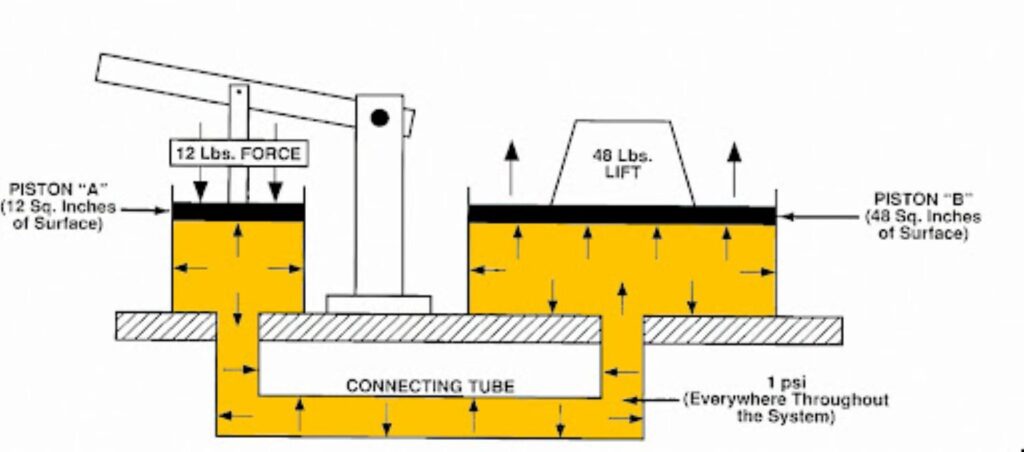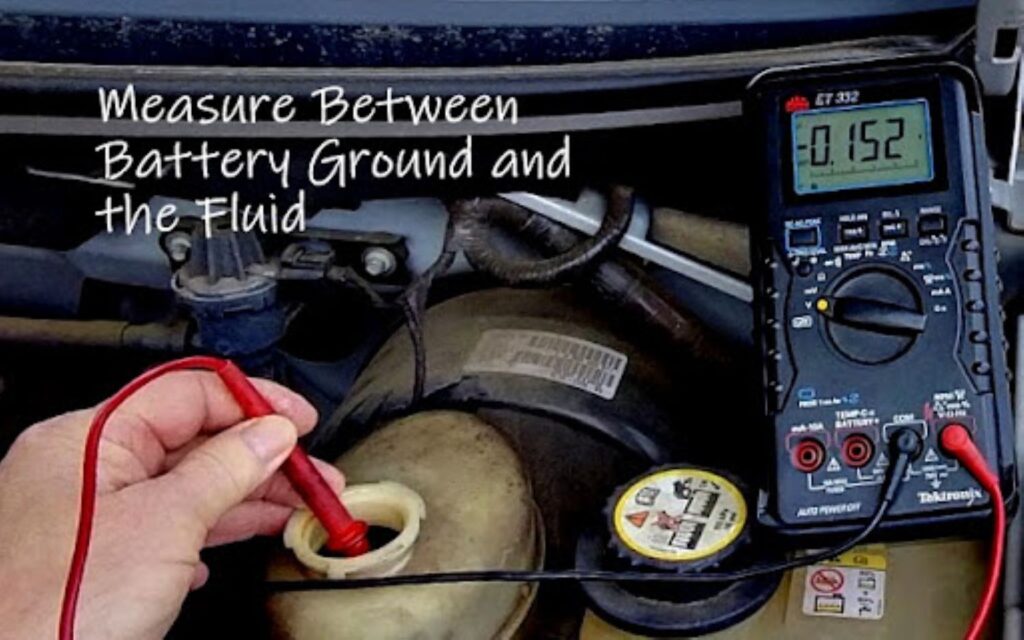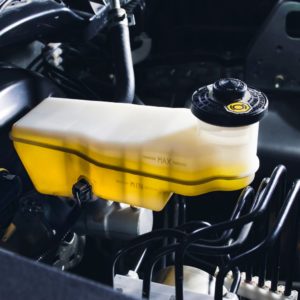The upkeep of your vehicle’s brake system is one of the most important areas of preventive maintenance. Because most modern vehicles have hydraulic brakes, this maintenance includes keeping an eye on your brake fluid.
Brake fluid’s primary purpose is to use Pascal’s Law to transmit force from the brake master cylinder to the calipers and the wheel cylinders. The brake lines are robust because they need to withstand fluid pressure that can exceed 2,000 pounds.
Thus, brake fluid creates force to activate the hydraulic system while also protecting the metal parts of your vehicle’s brake system. Given the right conditions, this fluid can last a good couple of years in your vehicle without needing to be completely replaced. However, keeping up with regular checks can help you recognize when your brake fluid needs to be flushed.
One easy test you can do is check your brake fluid color.

Brake Fluid Colors
While this visual test can be very helpful, remember that modern brake fluids come in many different colors. Blue and clear are common, and some types even come in red, yellow, and purple.
It’s true that certain brake fluid colors are supposed to start clear and settle into a yellow hue. Others though will come out of the bottle as yellow and darken with age. There are even variants that don’t discolor at all. In fact, some brake fluids are designed to change to a specific color when they need to be flushed. It’s best to check your brake fluid’s specifications to have a better idea about how it’ll age.
Still, many brake fluids darken when they’re exposed to moisture. These types tend to get darker as they grow older, following this pattern:
Clear
Fresh brake fluid straight from the bottle will typically be clear with a very slight yellow hue. As long as it remains this color, you can rest easy. But it never does.
Yellow or Amber
As clear brake fluid ages, it might take on a more yellow or amber shade. This discoloration doesn’t immediately mean the fluid is unusable. However, you might want to start conducting more in-depth checks if you don’t want to flush your vehicle’s system right away. More about that below.
Black or Brown
Black or dark brown brake fluid indicates the possible need for a fluid flush, although some OEMs don’t ever require brake fluid flushing.
Black or dark brown brake fluid indicates the possible need for a fluid flush, although some OEMs don’t ever require brake fluid flushing.
–Richard McCuistian, ASE Certified Master Automobile Technician
Brake Fluid Contaminants
Let’s consider the contaminants that change the color and properties of brake fluid. Unless your brake system has been compromised by leaving the master cylinder cap off or pouring the wrong kind of fluid (like oil or power steering fluid) in the cylinder reservoir, brake fluid contaminants are typically going to be copper and water. Brake fluid is hygroscopic, meaning, it absorbs water. Copper comes from the alloy used to coat the inside of the brake lines.

Brake Fluid Clarity and Smell
While the color of brake fluid can’t always be relied on, there are a couple of other cues your senses can pick up. These can help you determine the state of your brake fluid:
Clarity
The translucency of the brake fluid is important no matter the color. If you can’t see through the liquid, then it’s time for a change. The same goes if your brake fluid is cloudy or has particles floating in it.
Metallic Smell
A rusty, metallic smell coming from the brake fluid reservoir might mean that your fuel lines have rusted into the fluid. A full brake fluid change is in order when the smell is particularly strong.

Causes and Dangers of Dark Brake Fluid
Brake fluid absorbs water easily. Moisture typically bleeds through the tiny pores in your brake hoses and the seals around the brake fluid chamber. This increase in moisture ups the viscosity of the brake fluid, lowering its boiling temperature. In turn, the risk of damaging the metal parts of the brake system increases.
As these metal pieces dissolve into the brake fluid, the copper and other particles color the fluid, turning it dark.
This type of damage to your brake system can eventually build up and lead to a bad set of brakes. High moisture content will lower the boiling temperature of the brake fluid and up the risk of vapor pockets forming. These pockets can then begin to displace your brake fluid. If enough pockets form, you might find yourself stepping on a brake pedal with non-responsive brakes.
How Do I Check Brake Fluid?
The master brake fluid reservoir can be found by looking around your vehicle or checking your vehicle’s operating manual. The reservoir is typically made of a semi-translucent material, letting you catch a glimpse of the brake fluid color and its current level. Thanks to this design, you can check on the brake fluid without opening the cap and letting in moisture-rich air near the brake fluid.
Other Brake Fluid Tests
Because brake fluid can vary in color and makeup, it’s often best to test it using other methods in addition to the visual color cues. Here are a few simple tests you can get your hands on in case you’re wondering if it’s time for a brake flush:
pH Level
Using a pH testing strip can help you find the pH level of your brake fluid, which is kept in check using additive packages. These additives are essential because a more acidic pH level can lead to the brake lines corroding faster. The ideal range will depend on what brake fluid you have in your vehicle, and any drastic spikes in pH usually mean the additive packages have worn out.
Moisture Content
Most brake fluids can safely have a moisture content of one to two percent. Three percent is serviceable, but very close to being dangerous. Brake fluid with moisture content over three percent should be flushed. You can check moisture content with an optical refractometer or an electronic brake fluid tester.
Copper
Because the moisture in your brake fluid lines can cause the metal to break down, it releases copper into the brake fluid. You can use common copper testing strips to check on the amount of copper in your fluid. If it exceeds 200 ppm (parts per million), then it’s time for a flush.
Changes in your brake fluid’s color won’t always spell the need for a flush, but it’ll often be one of the first warning signs. Other tests will likely be more accurate, and we highly recommend conducting them regularly. If you’re unable to get your hands on these tests though, and your brake fluid has changed color and viscosity, it might be time to replace it.
Any information provided on this Website is for informational purposes only and is not intended to replace consultation with a professional mechanic. The accuracy and timeliness of the information may change from the time of publication.































